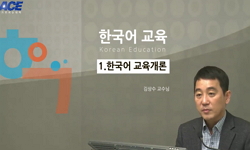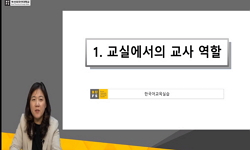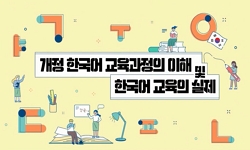It has been merely 25 years since the Korean language began to be taught in contemporary Mongolia, but many studies have been made on Korean language education. As the goals of Korean language education in Mongolia has been changed to the training of ...
http://chineseinput.net/에서 pinyin(병음)방식으로 중국어를 변환할 수 있습니다.
변환된 중국어를 복사하여 사용하시면 됩니다.
- 中文 을 입력하시려면 zhongwen을 입력하시고 space를누르시면됩니다.
- 北京 을 입력하시려면 beijing을 입력하시고 space를 누르시면 됩니다.

몽·한 번역 과정에서 나타난 몽골 중급 한국어 학습자의 문법 오류 양상 분석 = Korean grammatical errors of intermediate level learners in Mongolian Korean translation
한글로보기https://www.riss.kr/link?id=A105034360
- 저자
- 발행기관
- 학술지명
- 권호사항
-
발행연도
2017
-
작성언어
Korean
- 주제어
-
등재정보
KCI등재
-
자료형태
학술저널
- 발행기관 URL
-
수록면
239-279(41쪽)
- DOI식별코드
- 제공처
-
0
상세조회 -
0
다운로드
부가정보
다국어 초록 (Multilingual Abstract)
It has been merely 25 years since the Korean language began to be taught in contemporary Mongolia, but many studies have been made on Korean language education. As the goals of Korean language education in Mongolia has been changed to the training of Korean interpreters and translators, however, each school is executing translation education, but few studies have been made on translation education for Mongolian learners. What is more, because the methods of teaching and learning in the translation class are not efficient, many of learners who have completed such a course fail to be a professional interpreter or translator. Vast knowledge of vocabulary and grammar does not guarantee a learner to be a good translator. As it is essential for a translator to have grammatical abilities to understand the contents of a text to be translated and translate them correctly, grammar education is important as that much in the translation class.
Thus, this study purposed to analyze grammatical errors observed commonly in Mongolian learners’ Mongolian-Korean translation and to find strategies to teach grammar in the translation class. For these purposes, this study analyzed the types and causes of grammatical errors made by Mongolian learners in the process of Mongolian-Korean translation using translation materials produced by 24 learners who were juniors at the Mongolian University of Science and Technology, and proposed teaching-learning methods for correcting grammatical errors efficiently in the translation class. In consideration of the nature of the school, scientific and technological contents familiar to the learners were chosen as analysis materials, and the causes of errors were classified into those from pronunciation, those from contrastive grammar, and those from the learner’s negligence, and grammar teaching-learning methods were suggested to correct such errors.
As this study analyzed only 24 learners, who hardly represent all the Korean learners in Mongolia and whose level was not diverse, the findings of this study may not explain fully the current state of Korean translation education. Nevertheless, this study is expected to contribute to the activation of future research on Mongolian-Korean translation in various levels of translation process.
동일학술지(권/호) 다른 논문
-
- 한말연구학회
- 구현정 ( Koo Hyun-jung )
- 2017
- KCI등재
-
- 한말연구학회
- 권경일 ( Kwon Kyung-il )
- 2017
- KCI등재
-
‘매체 언어’와 ‘문법’의 통합 교육을 위한 문법교육 내용의 범주
- 한말연구학회
- 김진희 ( Kim Jin-hee )
- 2017
- KCI등재
-
18세기 후기 외국어 학습서에 나타난 인용구조 연구 - 『인어대방』과 『중간노걸대언해』를 중심으로 -
- 한말연구학회
- 윤혜영 ( Youn Hea-young )
- 2017
- KCI등재





 KCI
KCI KISS
KISS






